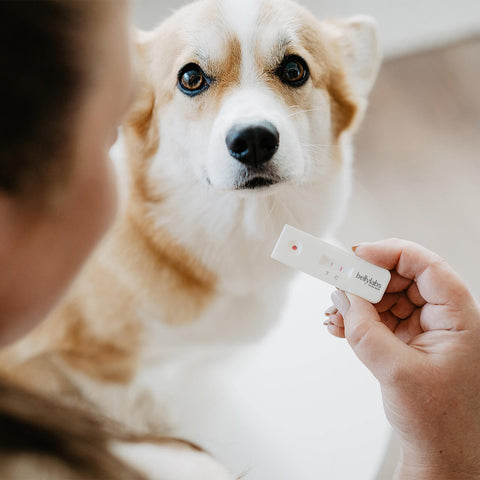Puppy socialization is a cornerstone of behavioral development, with significant implications for a dog’s long-term well-being and adaptability. For breeders, the responsibility to introduce puppies to a wide range of experiences begins well before they leave for their new homes. Early and thoughtful socialization not only ensures confident, well-adjusted dogs but also fosters a strong foundation for their relationships with humans and other animals.
The Sensitive Period for Socialization
The primary socialization period in puppies occurs between 3 to 14 weeks of age, a window during which their brains are highly receptive to new experiences. This period is characterized by rapid neurological development, during which positive exposure to stimuli can significantly shape a puppy’s temperament and responses to their environment.
For breeders, this means the critical groundwork for socialization must start early—typically as soon as the puppies’ senses begin to develop around 3 weeks of age.
Key Elements of Socialization at the Breeder
-
Exposure to Different People Introducing puppies to people of varying ages, genders, and appearances is vital for reducing fear of unfamiliar humans. Gentle handling by multiple individuals helps puppies build trust and confidence in human interaction.
-
Environmental Enrichment Puppies should encounter a variety of safe surfaces (e.g., carpet, tile, grass), sounds (e.g., household appliances, outdoor noises), and objects (e.g., toys, brushes, leashes). Controlled exposure to diverse stimuli helps them adapt to new environments more readily.
-
Canine Social Skills Interactions with littermates and their dam are essential for teaching puppies bite inhibition, communication signals, and boundaries. Breeders can supplement this by carefully introducing adult dogs with stable temperaments.
-
Positive Reinforcement Creating a supportive environment where puppies associate new experiences with positive outcomes (such as gentle praise or treats) builds resilience and reduces fear responses.
-
Gradual Stress Exposure Controlled exposure to mild stressors, such as handling paws or simulating a veterinary check-up, can enhance a puppy’s ability to cope with challenges later in life.
Incorporating Puppy Culture Protocols
Structured socialization protocols, such as those outlined in the Puppy Culture program, can significantly enhance a breeder's efforts to raise well-adjusted puppies. Puppy Culture provides a comprehensive framework that aligns with the critical developmental stages of puppies, offering breeders specific guidelines to optimize early experiences.
Puppy Culture Protocols:
-
Early Neurological Stimulation (ENS): Implemented during days 3 to 16, ENS involves gently stimulating puppies using specific handling exercises. This early exposure is designed to improve cardiovascular performance, strengthen adrenal glands, and enhance stress tolerance.
-
Socialization with Humans: Around 3 weeks of age, puppies begin reacting to humans and seeking attention. Introducing new humans during this period helps puppies form positive associations and reduces fear of unfamiliar people.
-
Environmental Enrichment: From 3 weeks onward, exposing puppies to various surfaces, sounds, and objects is crucial. Puppy Culture emphasizes introducing puppies to different textures, household noises, and novel items to build adaptability and confidence.
-
Problem-Solving Exercises: As puppies grow, engaging them in age-appropriate challenges encourages cognitive development. Activities like navigating obstacles or exploring new environments teach resilience and adaptability.
-
Positive Reinforcement Training: Introducing basic training using positive reinforcement techniques helps puppies learn desired behaviors and strengthens the human-animal bond. Puppy Culture provides structured protocols for teaching foundational skills during the early weeks.
By integrating Puppy Culture methods into their breeding programs, breeders can provide a structured and scientifically backed approach to early puppy development. This proactive socialization framework not only benefits the individual puppies but also enhances the breeder's reputation for producing well-adjusted, resilient, and adaptable dogs. For more detailed information on implementing these protocols, breeders can refer to the official Puppy Culture resources ( https://shoppuppyculture.com/ )
Risks of Insufficient Socialization
Puppies who are not adequately socialized during the sensitive period may exhibit heightened fear, anxiety, or aggression as adults. Behavioral issues stemming from poor early experiences can lead to difficulties in rehoming, reduced quality of life, and strained human-animal relationships.
Breeder Best Practices for Socialization
-
Structured Plans: Develop a socialization checklist tailored to each puppy's age and developmental stage.
-
Record-Keeping: Document each puppy's progress and exposure to various stimuli, providing valuable insights to their new families.
-
Education for New Owners: Equip future owners with guidance on continuing socialization, ensuring a seamless transition from the breeder to their new home.
Conclusion
Breeders play a pivotal role in shaping a puppy’s behavioral trajectory. By prioritizing structured and positive socialization during the early weeks, breeders can significantly enhance a puppy’s adaptability, confidence, and lifelong success. Incorporating frameworks such as Puppy Culture not only strengthens the socialization process but also underscores the breeder’s commitment to producing dogs that thrive in their environments.
This scientific and systematic approach to socialization benefits individual dogs, enhances breeder reputation, and ensures long-term success for puppies in their forever homes.












